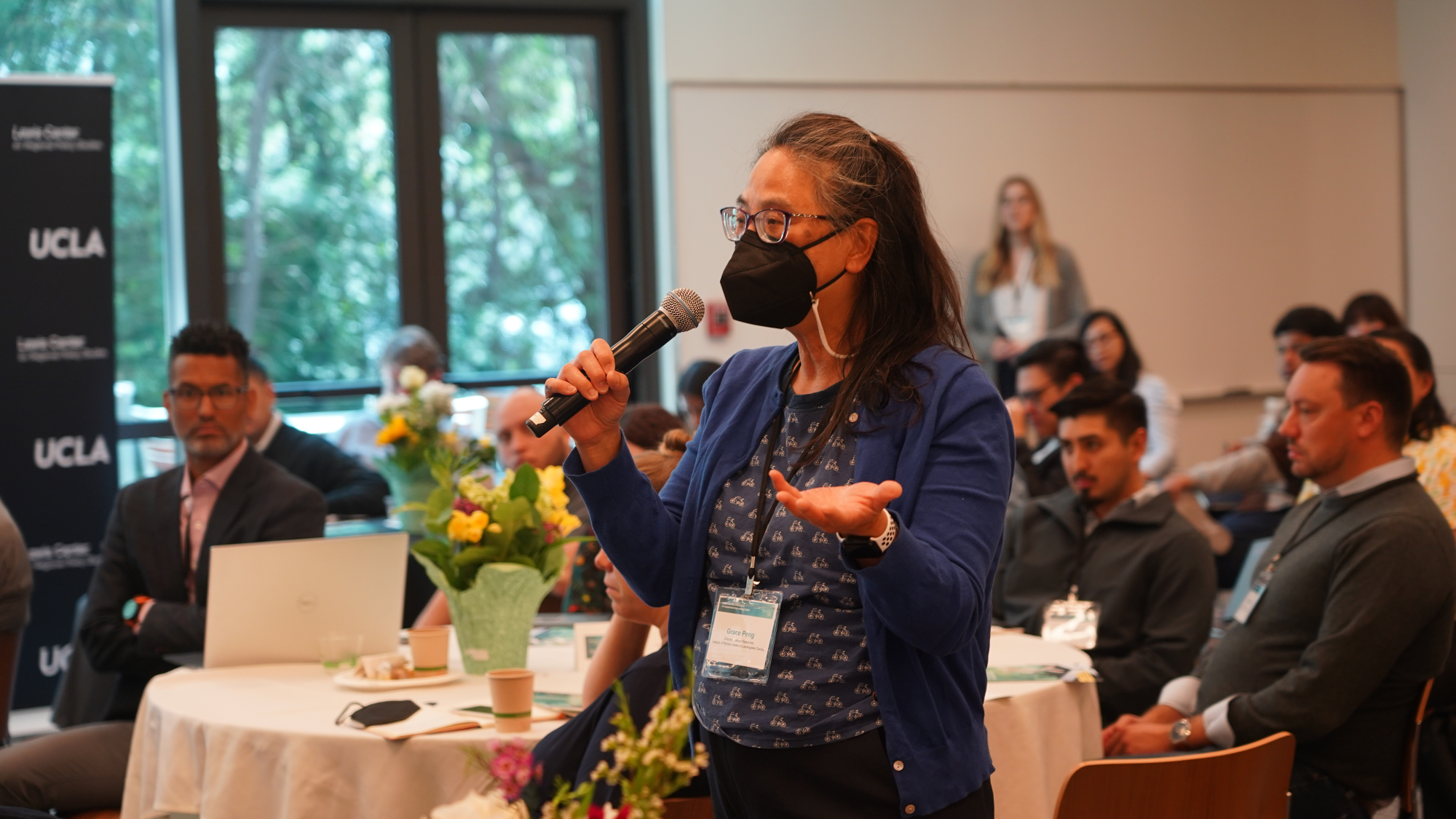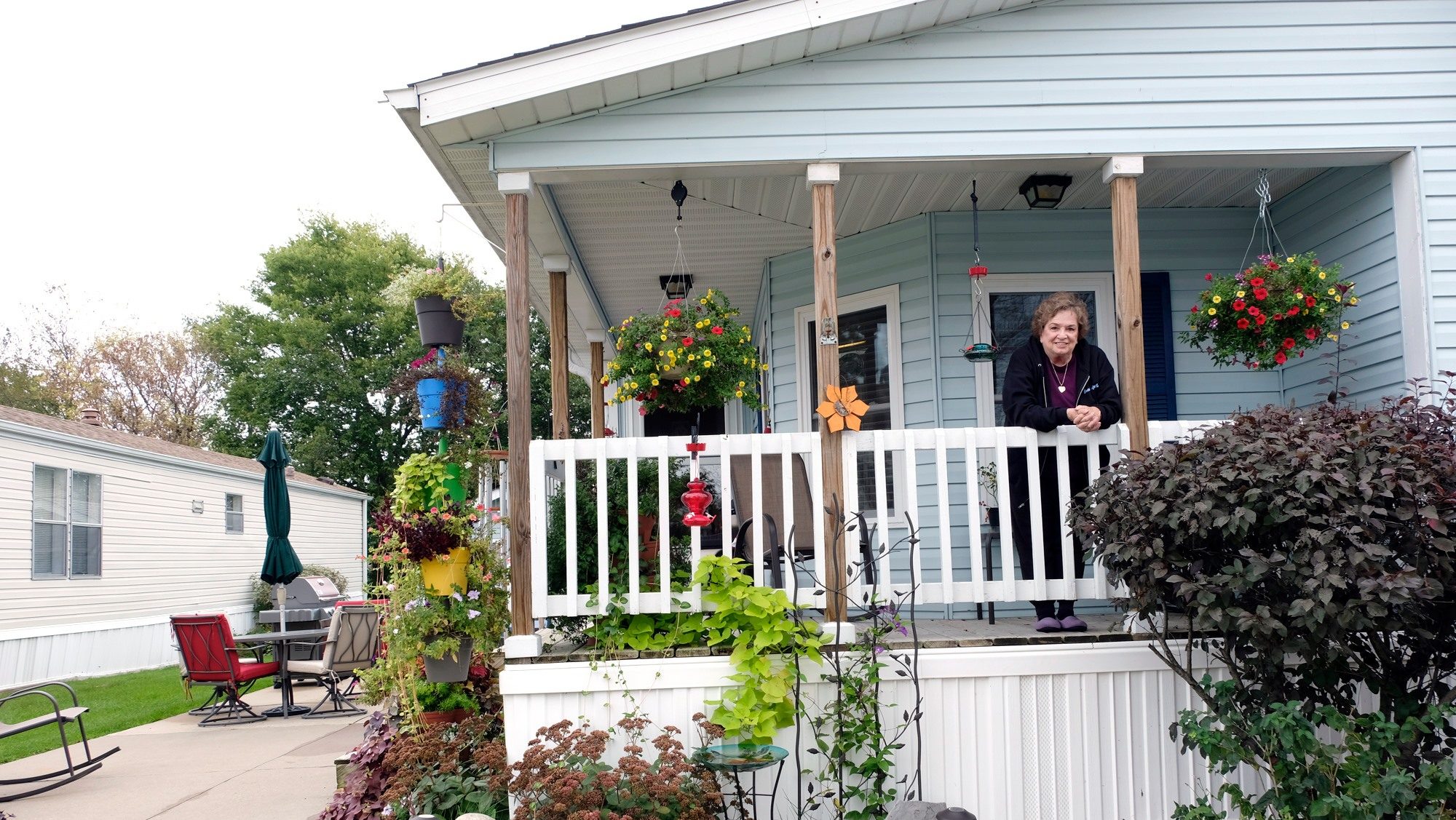
Navigating the crossroads of housing affordability, sustainable transportation in California
Californians are finding themselves at a crossroads — between the housing affordability crisis and the need to shift toward more sustainable modes of transportation.
The state has made significant progress in recent years, with the Legislature passing laws to expand housing production, protect tenants, and reform parking requirements. And in Los Angeles, voters supported a $120-billion investment in the region’s transportation system to address decades-old disparities.
During its fifth annual conference on regional growth and equity, the Lewis Center for Regional Policy Studies brought together researchers, policymakers, government experts and community partners to discuss the state’s progress on housing and transportation goals, and to highlight the ways to work better together.
“What’s even more important than the policy progress is people’s quality of life — that people aren’t overburdened by housing unaffordability, by long commutes, by being forced into making trade-offs in their lives that really don’t work well,” said Madeline Brozen, Lewis Center deputy director, at “InterActions LA: From Housing Crossroads to Transportation Connections,” held April 28 at The California Endowment.
Rising costs, a housing shortage, and widening income inequality have all contributed to a cost-burdened population. Californians cope by crowding into cramped housing units, moving farther away, and resorting to less secure housing opportunities.
Most Californians get around in vehicles, largely due to decades of decentralizing cities with the help of freeways. Suburban living and widespread car access have come at the cost of increasing travel distances, chronic traffic congestion, and hazardous greenhouse gas emissions.
“The struggle to provide more housing and build more transit is big,” said Mike Bonin, former Los Angeles City Councilmember. “We don’t have enough housing, and it’s hard to get around. But it’s a lot bigger than that.”
Climate Change and Racism
In his keynote address, Bonin focused on the nexus of two critical issues: climate change and racism. Los Angeles, he argued, is a city founded largely upon exclusion.
Today, this tension manifests itself in the imbalance between housing and access to opportunities, especially for low-income communities of color. Across much of Los Angeles, the workers who keep our city running — teachers, nurses, service workers and more — cannot afford to live near their jobs.
Building housing and transit together is a critical next step toward addressing these injustices and advancing climate solutions, according to Bonin. And he’s optimistic about the growing pro-housing movement in Los Angeles and the state, along with the recent transportation investments in communities that have long been underserved, like Metro’s K Line in South Los Angeles or the East San Fernando Valley Light Rail transit project.
“But just because each of those trends is getting easier individually doesn’t mean that doing the two things together, simultaneously, cooperatively, necessarily gets any easier,” Bonin added.
From State to Local Efforts: What’s Working
The event also featured panel discussions on recent statewide efforts, early program results — like the Affordable Housing and Sustainable Communities program, Los Angeles’ Transit-Oriented Communities program, and CEQA exemptions for transportation policies — and the messaging and frameworks necessary for implementation.
Representatives from the California Department of Housing & Community Development, Strategic Growth Council, PolicyLink, SPUR, Enterprise Community Partners, United Way of Greater Los Angeles, LA Metro and the UCLA Luskin School of Public Affairs participated in the discussions.
The sessions explored:
- How to tie housing development to transportation progress, and vice versa.
- A need to focus on increasing speed and efficiency in the development process; streamline processes and projects that achieve shared goals.\
- An emphasis on active transportation and getting people out of their cars.
- Centering access to opportunities and resources.
- How to move from persuasion to action.
Michael Lens, Lewis Center associate faculty director and associate professor, described California and Los Angeles as places where these issues are most acute, but also where solutions can effectively showcase creativity.
“I’ve been studying these issues in Los Angeles for more than a decade, and it is clear that we’re no longer talking about what needs to be done, or only talking about what needs to be done,” Lens said.
“We’re also talking quite a lot about whether what we’ve already done is working.”
This year’s InterActions LA was sponsored by the UCLA Lake Arrowhead Symposium, whose fall 2022 event focused on California’s housing crisis.



